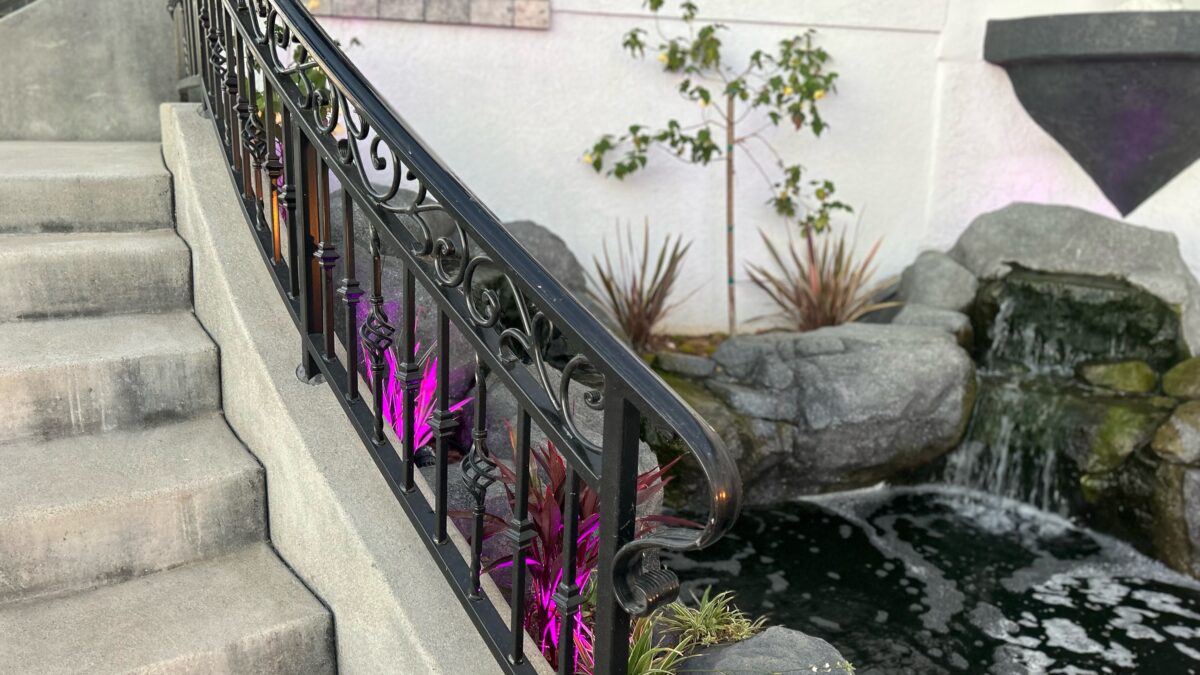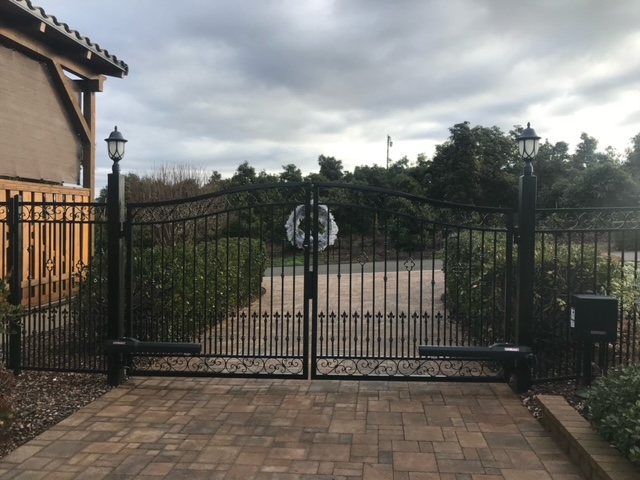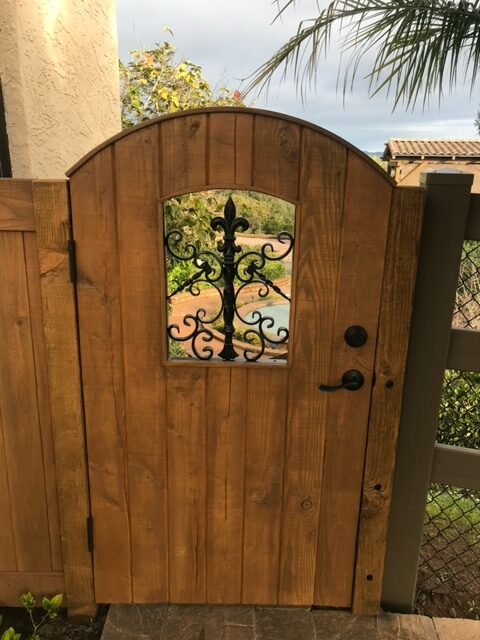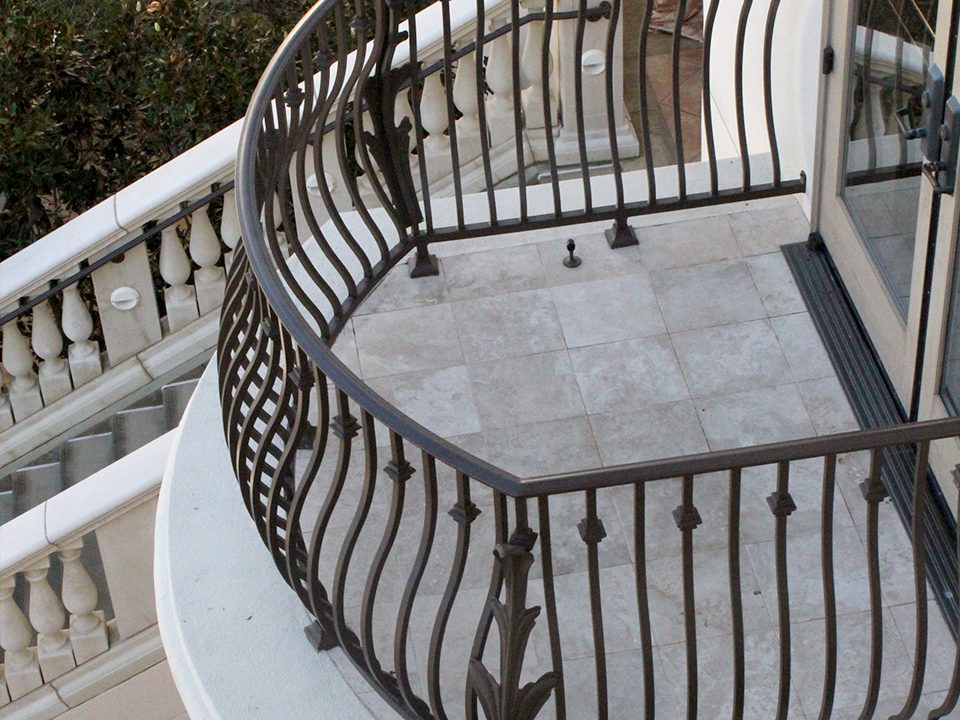- Custom Ornamental Iron Services
- 1-760-877-9951
- BPostal@AmericanFenceConcepts.com
- 1374 S Mission Rd #424, Fallbrook, CA 92028
Preserving Historic Charm: Custom Fencing for Historic Homes

Enhancing Outdoor Entertaining Areas with Custom Decorative Iron Gates
July 8, 2025
Innovative Iron Fencing Trends: Merging Technology with Classic Style
September 3, 2025Historic homes carry a unique charm and character that have been carefully preserved over generations. The challenge for modern homeowners and preservationists is how to incorporate contemporary design elements without compromising a property’s historical integrity. Custom iron fencing offers a compelling solution—melding the timeless beauty of handcrafted ironwork with today’s advanced materials and techniques. However, when working with historic properties, designers and contractors must carefully balance modern improvements and safety features with respect for the past.
In this comprehensive guide, we explore the unique challenges and opportunities when integrating modern iron designs into historic homes. We examine how custom iron fencing can be tailored to complement period architecture, address preservation guidelines, and provide enhanced security and curb appeal without detracting from a property’s storied past. Whether you’re a homeowner, architect, or preservation enthusiast, read on to discover how modern custom iron fencing can honor history while elevating your property for contemporary living.
Understanding Historic Preservation
Before embarking on a custom fencing project for a historic home, it is essential to understand the principles of historic preservation. Historic properties often have protected statuses or are subject to specific guidelines established by local, state, or national historic preservation organizations. These guidelines are designed to maintain the architectural and cultural integrity of the property.
-
Compliance with Preservation Guidelines:
Historic homes are subject to strict building codes and design restrictions. Any new additions or modifications, including fencing, must be vetted by preservation boards to ensure compatibility with the property’s original style and materials. -
Respecting Architectural Heritage:
Preservation is about more than following rules—it is an art form. The goal is to enhance the property’s original character rather than overshadow it. Elements like original materials, color palettes, and architectural detailing should be considered when designing custom iron fencing to ensure a seamless integration.
Understanding these foundational principles is the first step toward successfully merging modern design with historic charm.
Challenges in Incorporating Modern Iron Designs
While the benefits of custom iron fencing are numerous, integrating them into historic settings can present several challenges:
1. Balancing Modern Functionality with Period Authenticity
-
Aesthetic Harmony:
Modern iron designs often feature sleek lines and contemporary detailing that might clash with the more ornate, period-specific features of a historic home. The challenge lies in selecting or adapting designs that honor the original architecture while still providing modern benefits such as improved security and durability. -
Material Compatibility:
Historic homes were built using materials and techniques that differ vastly from today’s options. Introducing modern treatments, finishes, or fabrication processes requires careful selection to ensure that the new fence does not appear out of place. For example, while a high-gloss finish might work well in a contemporary setting, a more muted or textured finish could better complement a historic property.
2. Navigating Regulatory and Preservation Requirements
-
Local Historic Preservation Rules:
Many historic districts enforce stringent standards on exterior modifications. Obtaining approvals and permits can be a lengthy process that demands detailed documentation, historical research, and design modifications to meet these standards. -
Integration with Existing Structures:
Historic properties often have irregular layouts, unique foundation requirements, or aged construction techniques. Ensuring that new iron fencing aligns with these structures, both visually and structurally, can be complex. Tailoring the fence to these nuances without compromising its strength is a critical challenge.
3. Modern Technology vs. Traditional Aesthetics
-
Incorporating Automation and Smart Security:
Modern enhancements such as automated gates, remote monitoring, and biometric access systems can significantly increase security but may seem out of place in a historic setting. Integrating these technologies in a discreet manner that does not detract from the historic look requires innovative design solutions. -
Maintaining Material Integrity:
Modern iron is often treated with protective coatings and advanced fabrication techniques that were unavailable in the past. While these methods improve longevity, they can sometimes alter the appearance of the metal in ways that conflict with the historic aesthetic.
Opportunities and Advantages of Custom Iron Fencing for Historic Homes
Despite the challenges, there are many opportunities when it comes to integrating custom iron fencing into historic properties. With careful planning and a thoughtful approach, modern iron work can actually enhance the historic charm of a home.
1. Enhancing Curb Appeal with Authenticity and Elegance
-
Restoring Historical Elements:
Custom iron fencing can be designed to mimic or complement existing historic elements. Replicating traditional motifs—such as Victorian scrolls or colonial geometric patterns—ensures that the new fence reinforces the property’s heritage rather than detracting from it. -
Upgrading Without Compromising Character:
Modern iron work offers improved security and durability compared to many aging materials, while its customizable nature allows it to be styled in a way that respects and highlights historic architecture. By carefully matching colors, textures, and patterns, a custom iron fence can serve as both a functional security feature and a visual tribute to the home’s past.
2. Increased Security and Modern Functionality
-
Improved Protection:
One of the primary benefits of updating a historic property with a custom iron fence is enhanced security. Modern iron, when incorporated with advanced locking systems and automation, offers robust protection against intruders while preserving the historical look. -
Energy Efficiency and Low Maintenance:
New production techniques and sustainable materials mean that modern iron fences require less maintenance than their older counterparts. Reduced upkeep not only results in cost savings but also means that the property’s historic elements remain undisturbed by constant repairs or alterations.
3. Customization and Flexibility in Design
-
Tailored Solutions:
Custom iron fencing gives homeowners the freedom to design a fence that is unique to their property. Whether you choose to incorporate subtle historical references or opt for a bold statement piece that contrasts gently with the historic structure, customization ensures that the final product is a perfect fit. -
Incorporation of Modern Technology:
Even in historic settings, the discreet integration of modern security features—such as automated gates, integrated lighting, and smart access controls—can significantly enhance the property’s functionality. The key is to ensure that these elements are seamlessly integrated into the design so that they support rather than overshadow the historic aesthetic.
Best Practices for Preserving Historic Integrity
Successfully incorporating custom iron fencing into a historic property requires a strategic approach. Consider the following best practices:
1. Conduct Thorough Historical Research
-
Documenting the Original Design:
Begin by documenting the original architectural details of the property. Historical photographs, architectural blueprints, and expert consultations can help ensure that any new design respects the original aesthetic. -
Working with Preservation Specialists:
Involving historic preservation experts in the early stages of your project can provide valuable insights and recommendations. Their experience can help guide design decisions that honor tradition while incorporating modern functionality.
2. Collaborate with Experienced Designers and Fabricators
-
Specialized Expertise:
Choose professionals who have experience working with historic properties. Their knowledge of period-specific design elements and modern fabrication techniques will be key in creating a seamless integration. -
Customized Design Reviews:
Conduct detailed design reviews with your team, ensuring that every element—from decorative motifs to finishes—is aligned with the historic character of the property.
3. Prioritize Subtle Integration of Technology
-
Discreet Modern Enhancements:
When incorporating automation or smart security systems, focus on solutions that are discreetly integrated. Hidden wiring, low-profile sensors, and concealed control panels can ensure that modern technology enhances rather than disrupts the historic look. -
Aesthetic Matching:
Ensure that any modern components are chosen and finished to match the overall design scheme. Custom paint or finishes can help modern elements blend in with the traditional ironwork.
4. Maintain Regular Inspection and Maintenance
-
Preservation Through Upkeep:
Regular inspection and maintenance are essential to preserving both the security function and the historic aesthetic of your custom iron fence. A scheduled maintenance plan can help detect and address any issues before they impact the property’s appearance or structural integrity. -
Use of Eco-Friendly and Period-Appropriate Materials:
Where possible, select materials and finishes that are in keeping with the historic period of your home. Eco-friendly and sustainable options can also help reduce the environmental impact while maintaining historical accuracy.
Real-Life Examples and Success Stories
Numerous historic properties have successfully incorporated modern custom iron fencing while preserving their architectural integrity. For example, a historic mansion in an established district recently underwent an upgrade where custom iron railings and a decorative gate were installed. The new design featured intricate, period-appropriate scrollwork enhanced with modern protective coatings. The result was a perfect blend of old-world elegance and contemporary durability. Homeowners noted that the new iron work not only improved security but also revitalized the historic charm of the property.
In another case, a downtown heritage building utilized custom iron fencing that subtly integrated automated gate technology. The design honored the building’s Victorian architecture with authentic detailing while offering modern convenience and enhanced safety. These success stories demonstrate that, with careful planning and collaboration, modern custom iron fencing can truly preserve and even enhance the historic character of a property.
Conclusion
Integrating modern custom iron fencing into historic homes presents both challenges and exciting opportunities. The key is to strike a careful balance between maintaining the authentic charm and character of the past while introducing improvements in security, durability, and functionality. Through thoughtful design, close collaboration with experienced preservation specialists, and a commitment to subtle integration of modern technology, it is possible to create a custom iron fence that not only respects historic integrity but also elevates the property for contemporary living.
From thorough historical research and customized design reviews to the discreet incorporation of automation and smart security, every step is taken to ensure that the final product is a harmonious blend of old and new. This integration not only preserves the spirit of the past but also provides significant practical benefits, making your historic home safer and more attractive for generations to come.
If you’re ready to enhance your historic property with a custom iron fence that honors its heritage while delivering modern security and style, we’re here to help bring your vision to life.
Call us now at 1-760-877-9951 to schedule a personalized consultation and discover how our bespoke fencing solutions can transform your historic home into a timeless masterpiece.





